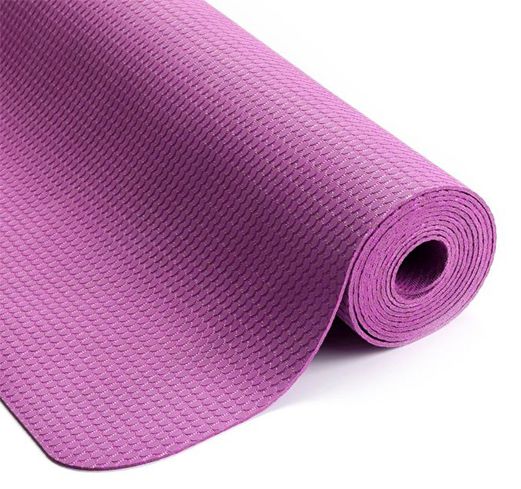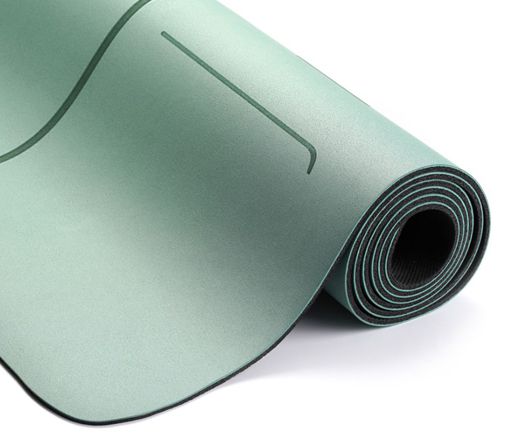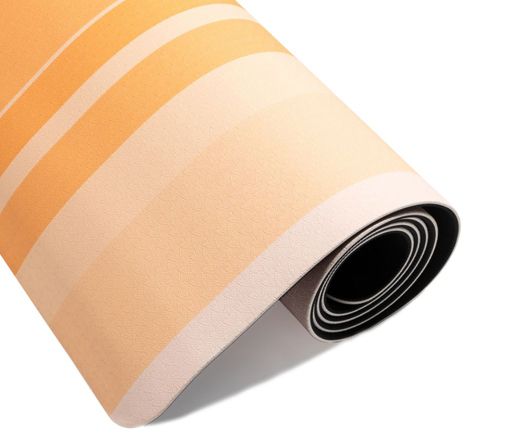What is the optimal thickness for a yoga mat?
At present, the standard thickness of yoga mats in the international market is: 1.5MM-8MM. The thickness of yoga mats is mainly related to the material characteristics and the experience of yoga practitioners.
At present, the standard thickness of yoga mats in the international market is: 1.5MM-8MM. The thickness of yoga mats is mainly related to the material characteristics and the experience of yoga practitioners.
Follow the Wavar Yoga Mat supplier to find out the best thickness and characteristics of yoga mats of different materials.
Pure natural rubber material
The general thickness of natural rubber yoga mat is: 1mm/2mm/3mm,
The advantages are: non-slip, good elasticity, good durability,
The disadvantages are: expensive, poor slip resistance when sweating, and smell (safe and non-toxic smell).

Suggest: Yoga mats with a thickness of 1mm-3mm are suitable for advanced yoga practitioners and professional yogis (more than 10 years of yoga practice experience). Advanced yogis need better experience and higher professional standards.
PU, cork, suede rubber material
PU rubber yoga mats/cork rubber yoga mats/suede rubber yoga mats are collectively referred to as high-end yoga mats, and the general thickness of such mats is: 4mm/5mm
The advantages are: non-slip, water-absorbing, breathable, sweating, and water can also be effectively slip-resistant.
The disadvantages are: expensive, easy to absorb dust, afraid of oil, difficult to take care of.

Suggest: Yoga mats with a thickness of 4mm-5mm are more suitable for intermediate and advanced yoga practitioners (more than 5 years). Intermediate yogis also have a certain sense of grasp of yoga movements and body balance, but they are not proficient enough. Therefore, the thickness of the yoga mat is not too thin, just to meet their needs.
TPE material
The general thickness of TPE yoga mat is 6mm/8mm
The advantages are: non-slip, grip and wear-resistant, high resilience, good durability, environmental protection, non-toxic, no peculiar smell, light and easy to carry, easy to care for, and affordable.
Disadvantages: poor anti-skid performance on wet ground

Suggest: Yoga mats with a thickness of 6mm-8mm are suitable for beginners who are new to yoga and beginners and advanced yoga practitioners (more than 3 years). It is best to choose a yoga mat with a thickness of 6-8mm, which can prevent sports injuries. , but you can't choose too thick mats because you are afraid of pain, because too thick mats will easily lose your balance during practice, the center of gravity will be unstable, and your feet will be sprained.
NBR material
The general thickness of NBR yoga mat is 10mm/15mm
The advantages are: good wear resistance, cheap
Disadvantages: poor slip resistance, easy to collapse, poor elasticity, release of chloride, easy to cause skin allergies.
Suggest: It is not recommended to choose to buy NBR material yoga mat
The thickness of yoga mats of different materials is also different. The above materials are available in Wavaryoga, but we do not recommend buying NBR materials, because nbr and pvc materials have been listed as carcinogenic materials by the International Health Organization and are not suitable for any sports. mat. Generally speaking, NBR material is widely used for sealing and other purposes.
Wavar Yoga Mat provides you with professional advice on purchasing yoga mats, if you need wholesale & customized yoga mats, please contact us, we will supply you with high-quality yoga mats at the best price, contact us for a quote. The top yoga mat manufacturers are here.